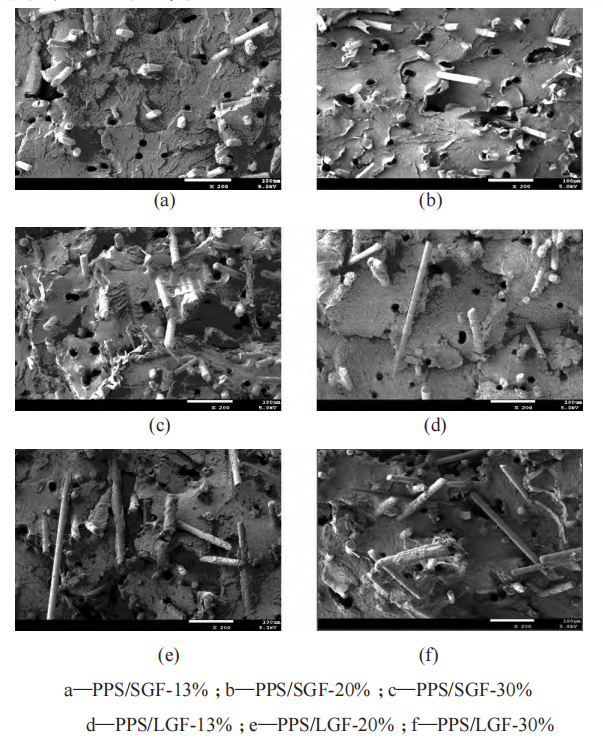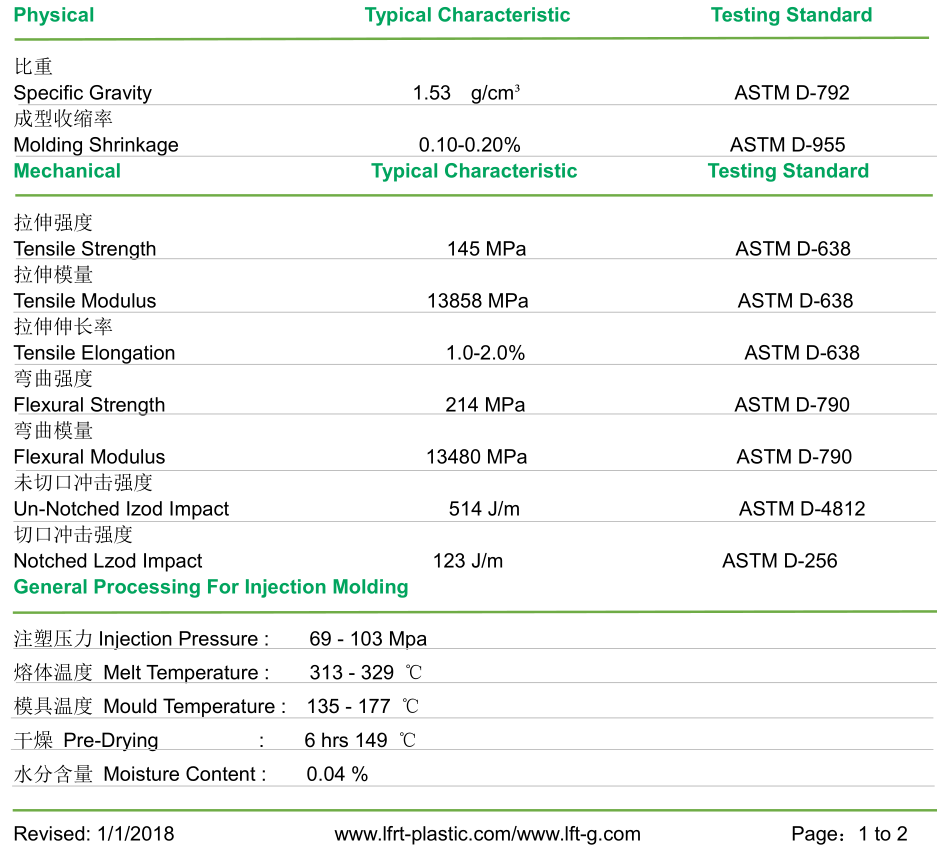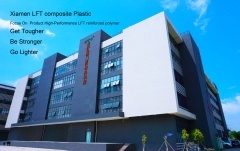item número.:
PPS-NA-LGF40Pagamento:
T/T or L/C (other payment ways also can be diorigem do produto:
Xiamen, ChinaCor:
Original color (also can be customized)porto de embarque:
Xiamen, Chinainformações PPS
A matriz resinosa dos compósitos termoplásticos envolve plásticos de engenharia em geral e especiais, sendo o PPS um representante típico dos plásticos de engenharia especiais, comumente conhecidos como "plástico ouro".
As vantagens de desempenho incluem os seguintes aspectos: excelente resistência ao calor, boas propriedades mecânicas, resistência à corrosão, retardador de chama até o nível UL94 V-0. Porque PPS tem as vantagens das propriedades acima, e em comparação com outros plásticos de engenharia termoplásticos de alto desempenho e tem as características de fácil processamento, baixo custo, tornando-se uma excelente matriz de resina para a fabricação de materiais compósitos.
Material composto PPS
O material composto de fibra de vidro curta (SGF) de enchimento PPS tem as vantagens de alta resistência, alta resistência ao calor, retardador de chama, fácil processamento, baixo custo e tem sido aplicado em automotivo, eletrônicos, elétricos, máquinas, instrumentos, aviação, aeroespacial, militar e outros campos.
O material composto de fibra de vidro longa (LGF) de enchimento PPS tem as vantagens de alta tenacidade, baixa deformação, resistência à fadiga, boa aparência do produto e assim por diante. Pode ser usado no impulsor do aquecedor de água, carcaça da bomba, junta, válvula, impulsor e carcaça da bomba química, rotor e carcaça da água de resfriamento, peças de eletrodomésticos e assim por diante.
Quais são as diferenças específicas entre os compósitos PPS reforçados com fibra de vidro curta (SGF) e com fibra de vidro longa (LGF)?

1. Análise de propriedades mecânicas
The reinforcement fiber added in the resin matrix can form a supporting skeleton, and the reinforcement fiber can effectively bear the external load when the composite is subjected to external force. At the same time, energy can be absorbed by fracture, deformation and other ways to improve the mechanical properties of resin.
The tensile strength and bending strength of the composites are gradually increased by increasing the amount of glass fiber.
The main reason is that when the glass fiber content increases, more glass fiber in the composite material can withstand the action of external force. Meanwhile, due to the increase in the number of glass fibers, the resin matrix between the glass fibers becomes thinner, which is more conducive to the construction of glass fiber reinforced frame. Therefore, with the increase of glass fiber content, more stress is transferred from resin to glass fiber under external load, which effectively improves the tensile and bending properties of composite materials.
The tensile and bending properties of PPS/LGF composites are higher than those of PPS/SGF composites. When the glass fiber mass fraction is 30%, the tensile strength of PPS/SGF and PPS/LGF composites is 110MPa and 122MPa, respectively. The bending strength was 175MPa and 208MPa, respectively. The flexural elastic modulus were 8GPa and 9GPa, respectively.
The tensile strength, bending strength and bending elastic modulus of PPS/LGF composites are increased by 11.0%, 18.9% and 11.3% compared with PPS/SGF composites, respectively. PPS/LGF composites have higher length retention rate of glass fiber. Under the condition of the same glass fiber content, the composites have stronger load resistance and better mechanical properties.
When the glass fiber content is low, the impact strength of the composite decreases. The main reason is that the lower glass fiber content cannot form a good stress transfer network in the composite material, so that the glass fiber exists in the form of defects under the impact load of the composite material, resulting in the overall impact strength of the composite material is reduced.
With the increase of the glass fiber content, the glass fiber in the composite can form an effective spatial network, and the reinforcement effect is greater than that of the glass fiber tip. Under the action of external load, the external load can be transferred to the reinforced fiber better, thus improving the overall performance of the composite. In the PPS/LGF system, the length of the glass fiber is longer and the spatial network is more dense. The reinforced glass fiber has greater bearing capacity and better impact strength. When the mass fraction of glass fiber is 30%, the impact strength of PPS/LGF is increased by 19.4% from 31kJ/m2 to 37kJ/m2, and the notch impact strength is increased by 54.5%(from 7.7kJ/m2 to 11.9kJ/m2).
2. Thermal properties analysis of PPS/SGF and PPS/LGF composites
When the mass fraction of glass fiber is 30%, the thermal deformation temperature of PPS/SGF composite and PPS/LGF composite reaches 250℃ and 275℃, respectively. The thermal deformation temperature of PPS/LGF composite is 10% higher than that of PPS/SGF composite.
The main reason is that the introduction of glass fiber makes the network skeleton of reinforced fiber formed inside the composite material, which greatly improves the heat resistance of the composite material. The size of glass fiber in PPS/LGF is longer, and the heat resistance improvement advantage is more obvious.
3. Cross section analysis of PPS/SGF and PPS/LGF composites

It can be seen that the glass fiber is well dispersed in the resin. With the increase of the glass fiber content, the construction of the reinforced fiber network inside the composite material is more perfect. This is also the main reason that the overall mechanical properties of composites increase with the increase of glass fiber content.
Compared with PPS/SGF and PPS/LGF composites, the glass fiber retention rate of PPS/LGF composites is higher, which is also the main reason for the better mechanical properties of PPS/LGF composites.
Datasheet

About us

Xiamen LFT plástico composto Co., Ltd é uma empresa de marca que se concentra em LFT e LFRT. Série longa de fibra de vidro (LGF) e série longa de fibra de carbono (LCF). O termoplástico LFT da empresa pode ser usado para moldagem por injeção e extrusão LFT-G, e também pode ser usado para moldagem LFT-D. Pode ser produzido de acordo com os requisitos do cliente: comprimento de 5 a 25 mm. Os termoplásticos reforçados com infiltração contínua de fibra longa da empresa passaram pela certificação do sistema ISO9001 e 16949 e os produtos obtiveram muitas marcas e patentes nacionais.